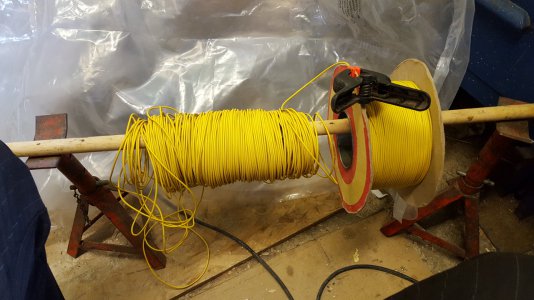My brother had a couple "lashers" for tying communications cable to a support strand. The lashing wire is the size of AWG16 (without insulation), is stainless steel, and comes in unbound rolls to fit into the lasher. Since the lashing is fixed at each pole, when a pole is reached and the wire "looks" too short to reach the next pole, a new roll is installed. Like most craftsmen, nothing gets thrown out, but usually ends up in a back corner, a couple of wraps wound around the coil to hold it together. Some were short, some were a couple of hundred feet long. In a rush job with long pole spans, long coils were not unusual.
I, of course, got first refusal when the warehouse was cleaned out. And never refused. Those shorts were usable for things up to fencing several acres. Splicing with a linesman splice assures good continuity for electric fencing. Shorter pieces often got used by the foot to tie anything that needed tying. Sadly, the source has dried up. Brother no longer takes such contracts. But I still have several coils shorts on hand.
Most anything has a purpose beyond what it is manufactured for. It's just a matter of finding that use. I use welding wire for remote actuauors from a barrel bolt. It is rather stiff so doesn't round corners well, but for straight applications is usually my solution of choice. I buy the cheap Horrible Fright .032 wire, ~1/32", 0.8mm. And keep a couple of rolls on hand in case one is lost or so damaged it needs downtime to untangle. Never throw anything away. Storage space can somehow be found.
.


